Talks
by Antonino Saggio
Cusine and Architecture
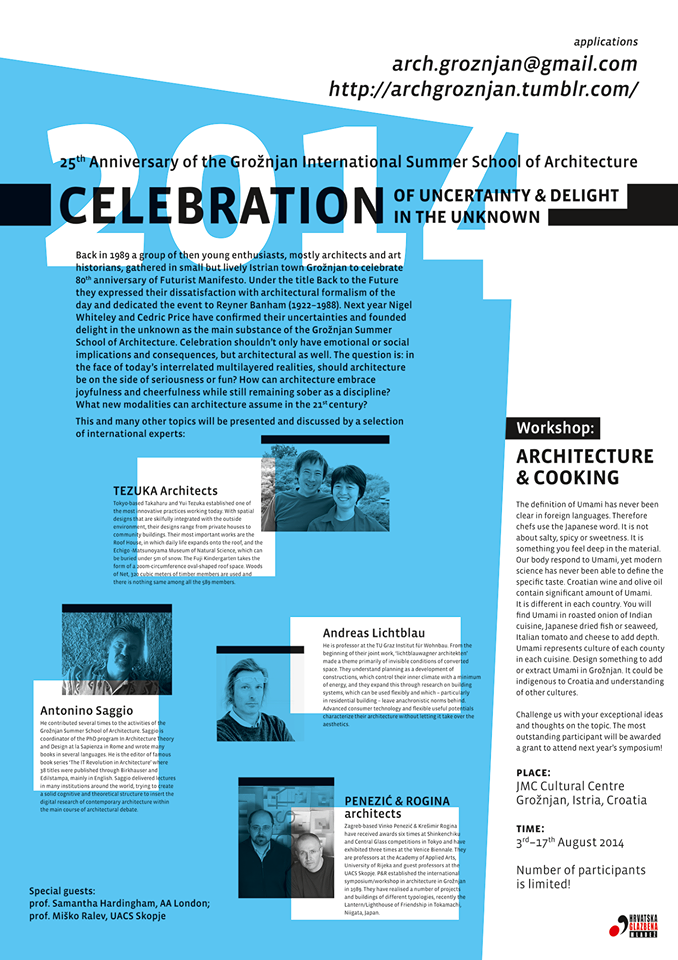
Talks
Grisignana 2008
Music & Architecture
Grisignana 2005
Index
0. Against Patisserie (confectionery)
1.Substances The ice cream man anecdote
2. Synergy
3. Procedure
4. Bimbo Robot The challenge
5. The media You Tube eccetera
6. Two radical different Examples
Ps.
6&1/2. The mayonaise anedocte
__________________________________
0. Against Patisserie (confectionery)
Come ben si sa esiste una famosa definizione che accoppia cucina e architettura. E’ quella di un gentiluomo francese, ci auguriamo finito sulla Ghigliottina, che aveva definito l’architettura come una sorta di decorazione.. come se fosse una pasticceria.
Ci hanno pensato subito dopo gli architetti della rivoluzione francese, a cominciare da Ledoux a togliere questa brutta idea di mente. L’architettura è l’anima della rivoluzione, è l’essenza del significato, è la sostanza dello spazio. L’architettura diventa lucida come un cannone, liscia come una macchina: assolutamente “indigesta” assolutamente non commestibile!!!!
Anche se la quesitone nei suoi termini teorici era stata ben impostata già all’inizio del xix secolo, la maggioranza del mondo se ne fregava e pensava ancora come see wikipedia “il Carême ne séparait pas l'architecture de la pâtisserie et il a écrit cette phrase : ‘les beaux arts sont au nombre de cinq, à savoir: la peinture, la sculpture, la poésie, la musique et l'architecture, laquelle a pour branche principale la pâtisserie.’ “
L’architettura è stata veramente una specie di pasticceria, di decorazione posticcia.
Per esempio quando un grande incendio distrusse Chicago nel 1867 e si ricominciò a ricostruirlo ancora più niente altro che pasticceria. una ossutara di scheletro e su questo, tonnellate di panna montata, ettolitri di cioccolato in riccioli, milioni di candidi.
Ma per fortuna un gruppo di architetti e ingegnerei con a capo Louis Sullivan dissero: “Basta ragazzi, cerchiamo di essere organici! cerchiamo di fare in modo che l’architettura non sia una pasticceria ma sia intimamente legata alla sua funzione facciamo che forma strutturale e forma decorativo formino un tutto organico!”
Organico, organico parola che vuole spiegare questi rapporti non di uno sopra l’altro ma insieme.
John Ruskin, The seven Lamps of Architecture
Carême ne séparait pas l'architecture de la pâtisserie et il a écrit cette phrase : "les beaux arts sont au nombre de cinq, à savoir: la peinture, la sculpture, la poésie, la musique et l'architecture, laquelle a pour branche principale la pâtisserie."
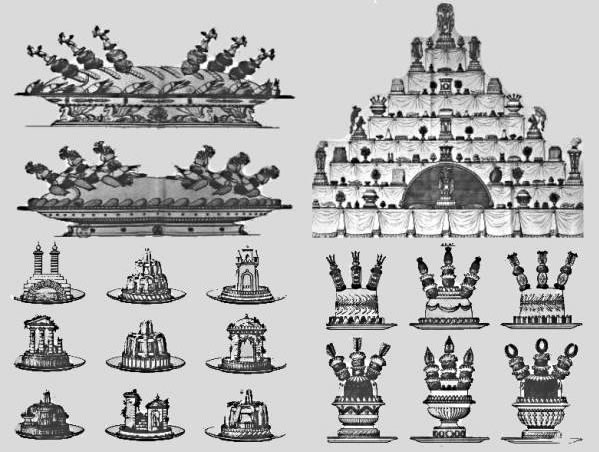
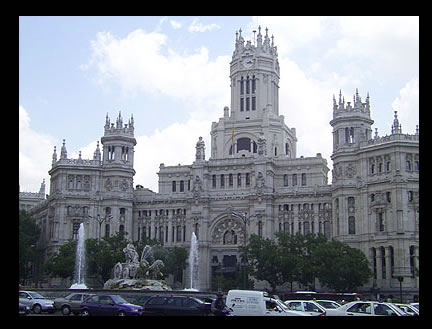
Madrid city council

new YorkPalace, Budapest
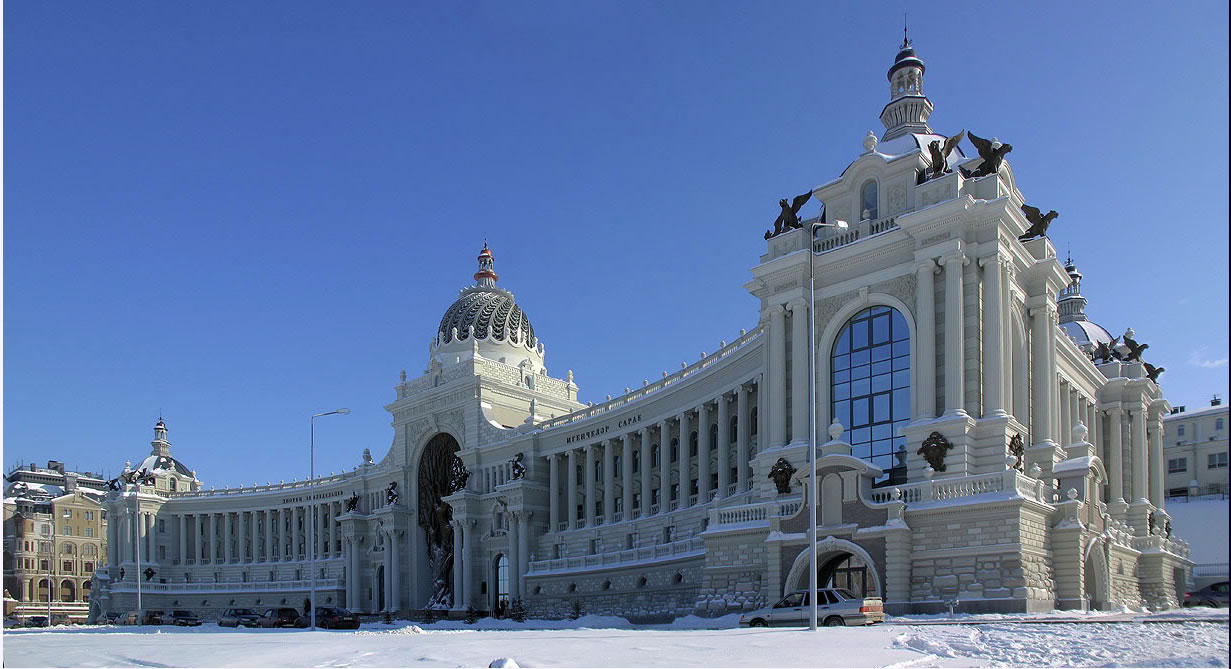
Ministry of education, Kazan 2010
But the modern architecture is created against this idea.. From the very beaginning it was absoluteltel indigesta
indigestible
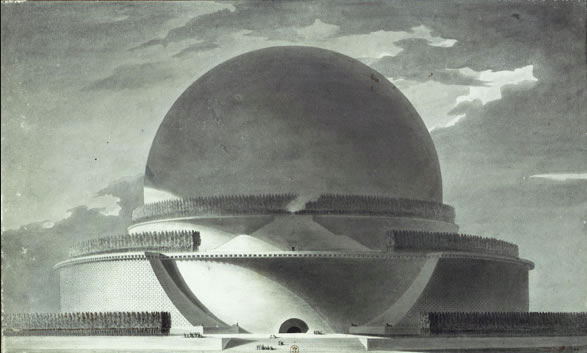
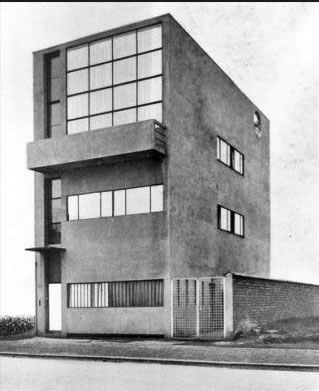
Above ledoux, below Le corbusier Maison Guiette


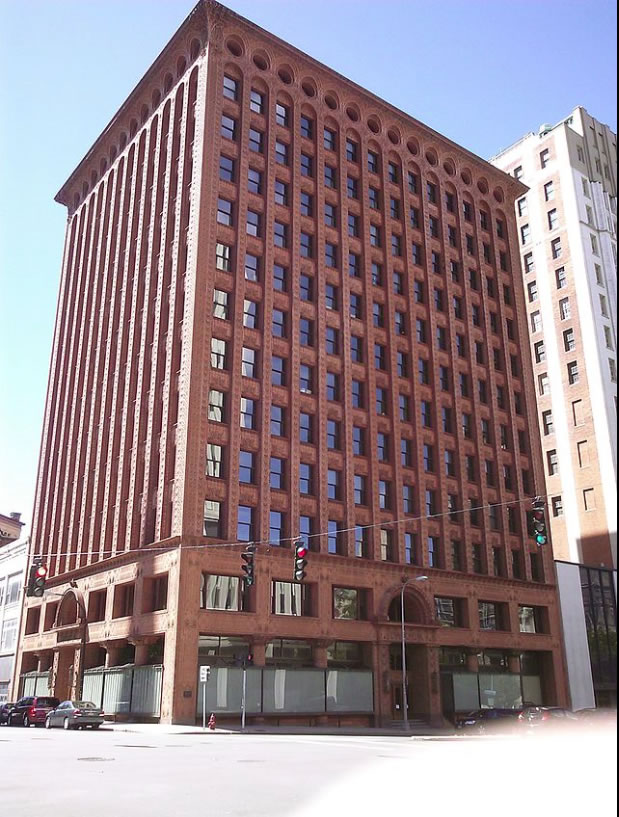
Buffalo Sullivan

See
Substances versus Ingredients
1.Substances The ice cream man anecdote
I think that architecture and cuisine share one real key thing. They are the substances. I mean both cuisine and architecture are made of substances but do not end with substances but never the less good substances are crucial. Here is the anecdote.
My father asked to the best ice cream maker in Messina sicily how happened he was making such a great ice cream. “Onorevole, è semplice basta usare i migliori ingredienti” Enough to use the best ingredients: best chocolate best pistachios etc. Now this aspect is in common the best ingredients
But here there is a huge difference. The best ingredients in cuisine are the raw material the ingredients for architecture are “not” the material!!!! To think that to make good architecture the ingredients are the material of construction and the best they are the best architecture comes is exactly do not understand a thing. In architecture we do not deal with ingredients we deal with substances...
What are the substances.. ? well they are concepts, crisis that orient our thinking.
These text for example translated in many languages.. deals abut this. New substances at the birth of new architecture.
In all my work I always pose these substances.
_________
A Manifesto for an Architecture of Information
___________
NEW SUBSTANCES
INFORMATION TECHNOLOGY AND THE RENEWAL OF ARCHITECTURE
These text for example translated in many languages..
New substances at the birth of new architecture.
In all my work i always pose these substances.
For example in the all work of urban voids I create these concepts... rebuilding nature, infrastructuring, mixite etc. They create a conceptual area within which architecture operates. In my recent work on infrastructure I have other substances:
multitasking, green systems, or information technology foam..
So we have substances not just ingredients in architecture. but there is a strong strong similarity here again.

Substances
Five Principles (substances) of Contemporary Design
in the "Urban Voids" project
I. Mixité
(The necessity of coexistance of Living, Producing, Exchange)
SportScape. Un paesaggio Ludico e interattivo tra l'aeroporto di Roma e il nuovo Porto di Roma
Aldo Mammuccari, Lorenzo Mastroianni, Alessandro Mazza e Alfredo Principia
Vuoto a rendere. Il mercato rionale cme terminale di una rete ecologica attiva. Un esempio nel quartiere Appio Latino a Roma.
Vanina Ballini
II. Driving Force
(The Specific and Original Combination of the mix activities that solve simultaneously its Necessity, and its Marketing and Narrative Aspects)
Vuoto a rendere. Il mercato rionale cme terminale di una rete ecologica attiva. Un esempio nel quartiere Appio Latino a Roma.
Vanina Ballini
III. Negotiation
(Private Economic Profit Public Social Profit, negotiation also with site.. program context)
..
IV. Infrastracturing
(The idea is that contemporary projects more and more deals with the theme of infrastracturing either because they do directly - i.e. station ports airports- or inderectly - as a way to partecipate to the urban context and to be an active part of it )

La Urban Green Line Genera progetti
KIDULT
Centri d'arte e sperimentazione senza tempo
RosaMaria FaralliLi.N.F.A.
Liceo per la Nuova Formazione Artistica
Davide Motta
V. Rebuilding Nature
(The idea is that contemporary projects in the Build city "Compensate" Indemnify the existing city with a new gradient of environmental consciousness and building intelligence. )
MOB il museo dell'opera Borrominiana, una macchina atmosferica per trattare la crisi di villa Pamphilj
Matteo Alfonsi5. Five Principles of Urban Green Line
E' Stata pubblicata la Seconda Edizione del il catalogo completo dedicato alla Urban green line con una serie numerosa di progetti architettonici inediti e nuovi saggi critici. Il volume segue la Mostra di maggio 2012 e il numero di marzo 2012 della rivista l'Arca e anticipa nuovi incontri ed esibizioni.
Si puo avere in tre format diversi ePub 2,99, In black&white 8,90 or in color 28,
1. MultiFunctionality
(come le mura, mica sono solo difensive, una "pluralità di funzioni" vi devono ricadere, innanzitutto quello della mobilità)
Valerio Galeone Cad 2011
2. Systematic Green
(è il concetto di ecologico in quanto sistema attivo, capace di innestare "cicli" e processi, maratonda >)
Michela Falcone Cad 2012
Tram Rotterdam
Tram Friburgo Mov
3. Information Technology Foam
(l'idea che oggi dell'informatica non si può fare a meno, e che anzi è spesso catalizzante es 2009, es 2007, es 2006)
Tiziano Derme Cad 2011
4. Living Accessibility
(è l'idea che per vivere bisogna rendere accessibili sistemi urbani e ambienti diversi della città, insieme al senso del viaggio)
Umberto di Tanna Cad 2011
5. Magic Crisis
(è la chiave di volta, bisogna andare sul difficile è solo li che si apre veramente la modernità, anche nella sua componente più complessa e antica)
Giulia Gabellini Cad 2011
2. Synergy
the similarity is that one that is called “synergia”. A kind of chemical math in contrast with algebraic math. For algebra 1+1 is always equal 2, in synergia it can make 3 or four or in some case -1 or -2! What does it mean? It means that in cuisine that ingredients may explodes positively. For example. Badsilico tomato and spaghetti! or mozzarella pizza anchovies and tomato, or granita di caffé panna e brioche (these ingredients must be pronounced in their opriginal language ... . These are case that 3 ingredients make 10 is a case of fantastic synergy. (but whipped cream and tomato is a disaster!, salade with spaghetti pasta some thing that for an italian is blaspheme etc., cappucino and anchovies disgusting) and similarly in architecture. But great cooks and great architects know the magic of synergetic approach.

or longer version:
Ecosystems for today architecture
Synergie and Mixite. Pioneers of Green Architecture.
Vernadasky + Buckminster Fuller = John Allen’s Biosphere2
in "L'Architetto Italiano" #. 30 7/8 2009
Synergia

Bucky Minster Fuller

Richard BR. Buckminster “Bucky” Fuller (July 12, 1895 – July 1, 1983)[1] was an American engineer, systems theorist, author, designer, inventor, and futurist.
Fuller published more than 30 books, inventing and popularizing terms such as "Spaceship Earth", ephemeralization, and synergetics. He also developed numerous inventions, mainly architectural designs, the best known of which is the geodesic dome. Carbon molecules known as fullerenes were later named by scientists for their resemblance to geodesic spheres.
From: http://en.wikipedia.org/wiki/Richard_Buckminster_Fuller

Algoritm by Fuller as reported by John Allen >>>
Buckminster Fuller's
Synergetic Algorithm and
Challenges of the Twenty-First Century
By John Allen, FLS
This algorithm of creative design participation in human evolution consists of five steps:
if there is a large scale design problem then take the synergetic overall approach;
- if you take the synergetic overall approach then proceed to a comprehensive anticipatory design;
- if you've started on this, then make detailed macro-comprehensive and micro-incisive studies;
- if these are completed, then proceed to do more with less; ephemeralize;
- if you've ephemeralized, then computerize to check rationality and to communicate;
- if you've computerized then check if you've increased the wealth of all involved.
This algorithm constitutes his greatest contribution to dealing with the challenges coming toward humanity,in the next century, a time of great planetary troubles which he metaphorically referred to as humanity's final examination. >>>
Vladimir Ivanovich Vernadsky

Vladimir Ivanovich Vernadsky 1863 – 6 January 1945) was a Russian/Ukrainian and Soviet mineralogist and geochemist who is considered one of the founders of geochemistry, biogeochemistry, and of radiogeology.[1] His ideas of noosphere were an important contribution to Russian cosmism. He also worked in Ukraine where he founded the National Academy of Science of Ukraine. He is most noted for his 1926 book The Biosphere in which he inadvertently worked to popularize Eduard Suess’ 1885 term biosphere, by hypothesizing that life is the geological force that shapes the earth. In 1943 he was awarded the Stalin Prize.
From: http://en.wikipedia.org/wiki/Vladimir_Vernadsky
John Allen And the Ecotechnics Group

John Polk Allen (born 6 May 1929, Carnegie, Oklahoma)[1] is a systems ecologist and engineer, metallurgist, adventurer and writer.[2] He is best known as the inventor and Director of Research of Biosphere 2, the world's largest laboratory of global ecology, and was the founder of Synergia Ranch. Allen is a proponent of the science of biospherics.
Allen currently serves as Chairman of Global Ecotechnics, and a director of Biospheric Design and of Institute of Ecotechnics. He is Fellow of the Royal Geographical Society, the Linnean Society, and the Explorers Club.
In the early sixties, John Allen worked on regional development projects with David Lillienthal’s Development Resources Corporation in the U.S., Iran, and Ivory Coast where he became an expert in complex regional development. Before that he headed a special metals team at Allegheny-Ludium Steel Corporation which developed over thirty alloys to product status. He has led expeditions studying ecology, particularly the ecology of early civilizations: Nigeria, Iraq, Iran, Afghanistan, Uzbekistan, Tibet, Turkey, India, and the Altiplano.
He studied anthropology and history at Northwestern, Stanford, and Oklahoma Universities, and served in the U.S. Army’s Engineering Corps as a machinist. He graduated from Colorado School of Mines and received an MBA with High Distinction from the Harvard Business School. In the early 1960s, Allen headed a special metals team at Allegheny-Ludlum Steel Corporation which developed over thirty alloys to product status, then he worked with David Lillienthal’s Development Resources Corporation in the U.S., Iran, and Ivory Coast.
Under the pen name, Johnny Dolphin, he has chronicled his personal history alongside the social history of his many destinations in novels, poetry, short stories and plays.[3
from Wikipedia http://en.wikipedia.org/wiki/John_P._Allen


The Biosphere 2 Scientific experiment and the closed systems

3. Procedure
An apparent similarity is that one of procedure. In cuisine the procedure is the key: before you boil the water, then put salt then pour pasta in, then stir it then put sauce and when is served basilico and parmesan cheese..
There is not another procedure to do spaghetti al sugo. This is the procedure. In a way large office tend to create procedure, chopped the work similarly in phases and give each phase people and resources. They create always good “architectural dishes” but often in architecture and also in cuisine you invent, you create something different. These is done by two processes. Either changing the procedure or by mistake. Mistakes or changing standard procedure is supported by critical evaluation. A difficult area to rationalize . It is a quick act that envision the possibility that from that mistake something interesting may happen. Kill this possibility, will stop any further improvements, allow it by default brings to huge disasters.
Naturally the idea of procedure in Cuisine and Architecture is related to scripting
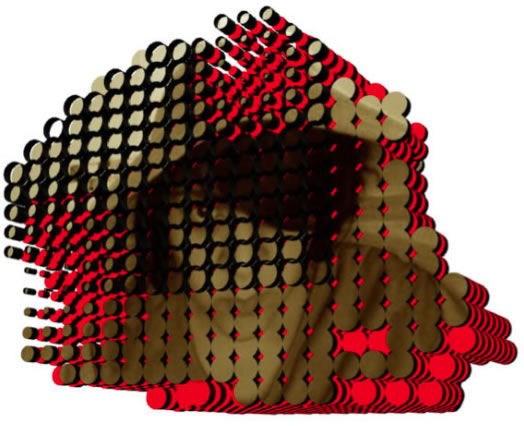
Golnaz Ephraimi
4. Bimbo Robot The challenge
Now let's approach our era. The other day I was invited at a friend house. I like risotto. The guest just bought this kitchen robot. they made the risotto with the bimbo robot. It came out not too good. So that we have to kill the robot? we have to say “oohhh my grand mamma yes she does a great risotto she was able to make... “ But this must be reactionary and I want my old risotto just because we are not able to use to bimbo robot?
Ithink that the bimbo robot is just a crisis.. we have to learn it not to make an old risotto but to invent what is great for, what kind of new dishes he can create. we have to struggle to understand his potential and invent at the same time new things
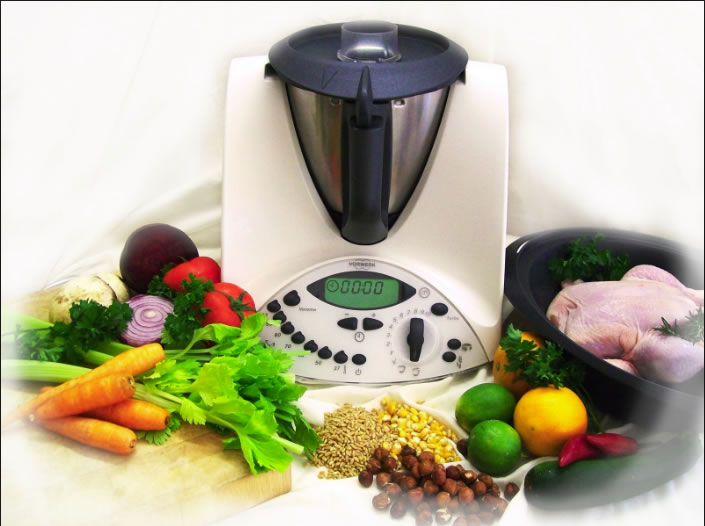
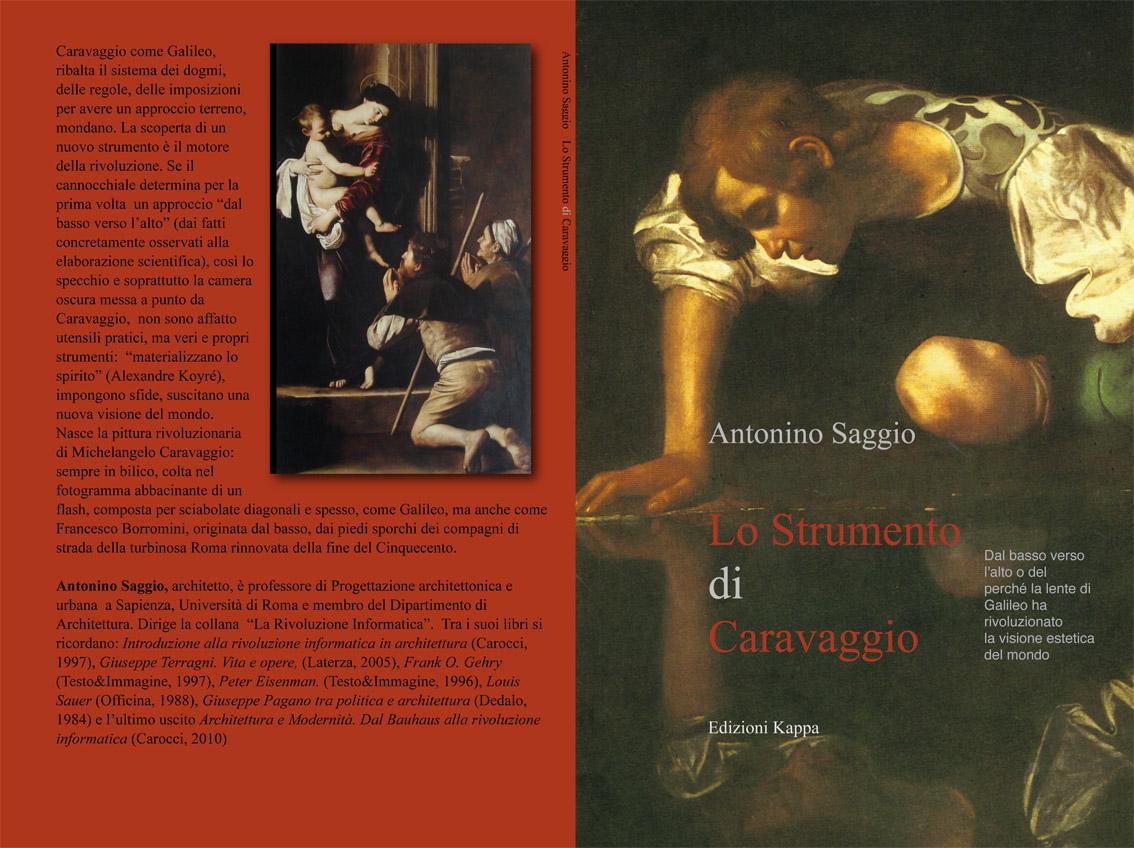
See In Ibooks!! or in Amazon
Scarica un estratto gratuito de "Lo Strumento di Caraggio" In Italiano
for Ipad Only
![]() Dowload a free preview of "The Instrument of Caraggio" in English
Dowload a free preview of "The Instrument of Caraggio" in English![]()
for Ipad Only
5. you tube
In the mean time we can use a lot of the present technology to diffuse what we know. we can use you tube to share our visions in cuisine or architecture..when can use some scripting we can use some other things and from time to time imagine yes the Bimbo robot the bimbo robot some days I will understand how to create something really revolutionary with him.
6. Two radical different Examples
Editable architecture
Zbigniew Oksiuta Breeding space >>

Casa Artusi Forlinpopoli
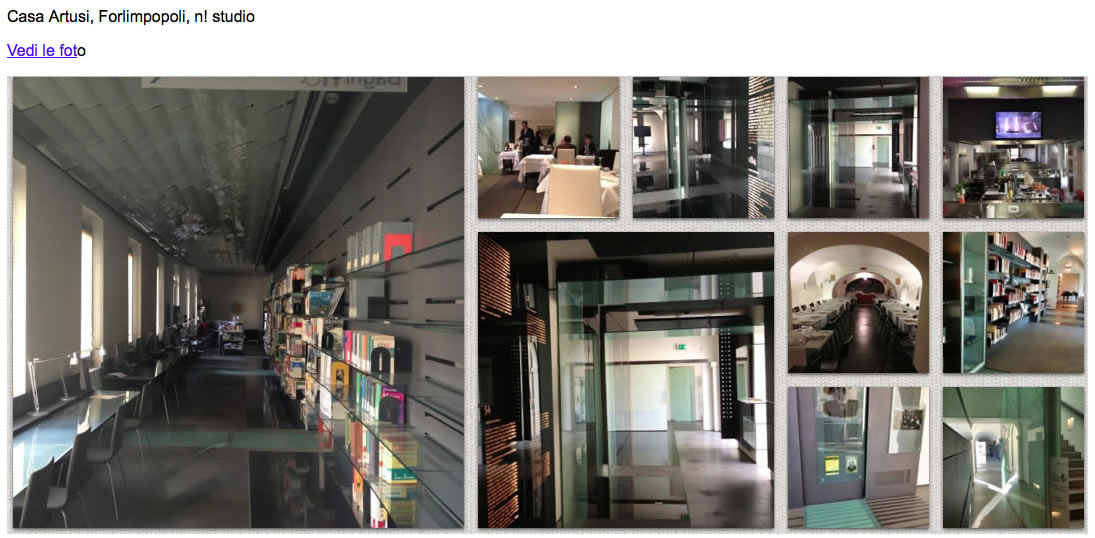
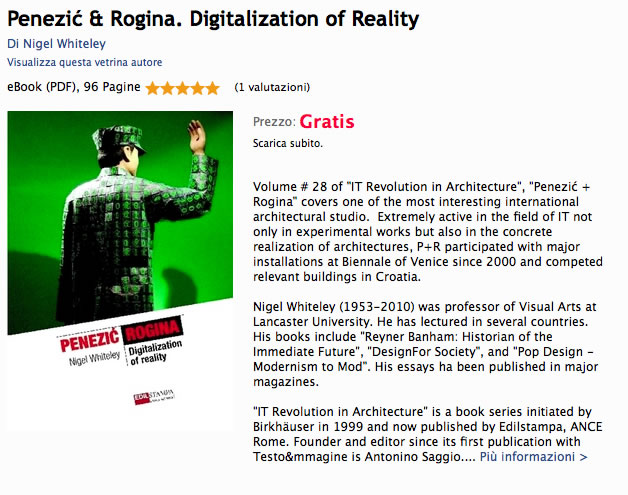
For the days of the simposium for free download as an homage to my friends and to the author
Nigel Whiteley
Antonino Saggio http://www.arc1.uniroma1.it/saggio/





















